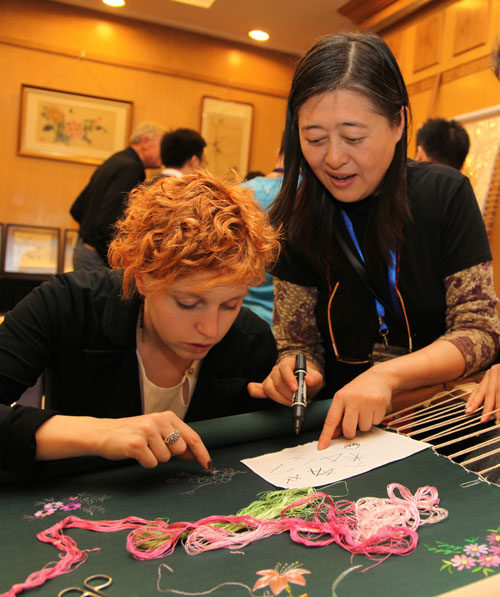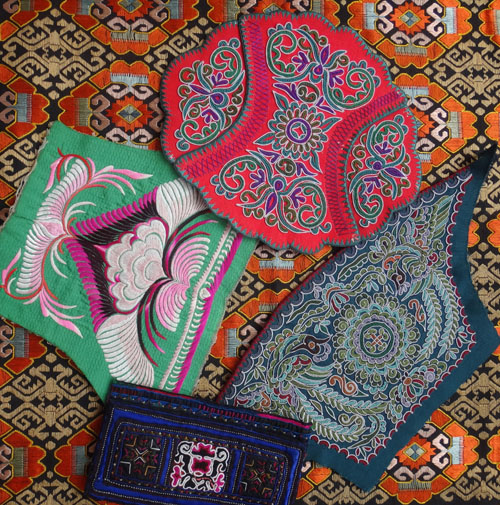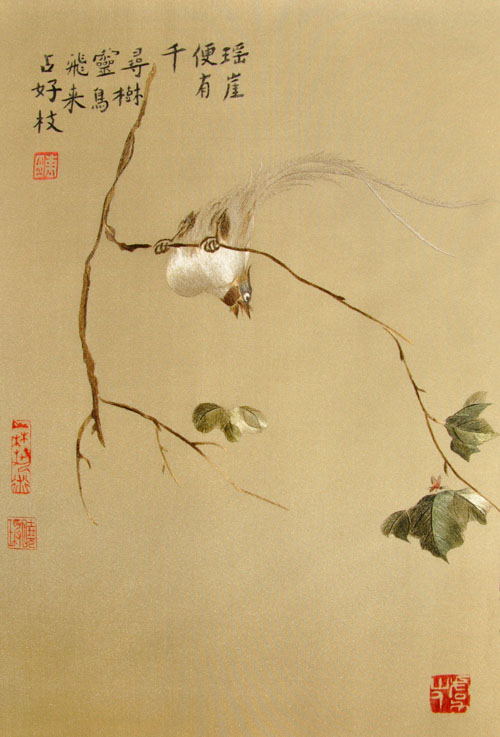
Professor Shao Xiaocheng was supervising her student
Shao Xiaocheng is a prominent Chinese embroidery artist and the Director of the Beijing Shao Xiaocheng Embroidery Research Institute. She is a senior national fine art master of arts and crafts and a member of the Internationale Organisation Für Volkskunst (IOV) of UNESCO. She has been creating a great concentration of art in the past thirty years while researching the history, reality, theories, and practice of Chinese embroidery. Shao Xiaocheng’s research covers embroidery varieties on the verge of decline and those that have disappeared since ancient times. Moreover, she has succeeded in practicing and summing up complicated techniques of repairing and duplicating those embroidered pieces as cultural relics in different styles. She took the lead in bringing the education of embroidery into institutions of higher learning, having actively promoted the inheritance, protection, appraisal, and appreciation of embroidery as a Chinese national heritage. Shao Xiaocheng wrote the book Appreciation of Chinese Embroidery and also many papers on embroidery, such as Getting to Know Four Major Schools of Noted Embroidery before Collecting Embroidered Articles and Collection and Appraisal of Embroidery.
The brief history of the craft is an introduction of the tools and materials used in antiquity to the present, followed by analyzing over twenty combinations of needlework techniques. Next, exercises are presented to help better comprehend these techniques and further enhance appreciation of the craft. Lastly, the collection and preservation of embroidery is discussed with detailed explanation on how to clean an embroidery piece.

Embroidery of the ethnic minorities in China
Chinese Embroidery—An Illustrated Stitch Guide is both a book for the connoisseur and for the crafter. It begins with the history and the evolution of the art starting in 1046 BC through the different ruling dynasties. The styles of the various schools in the different parts of China have developed Chinese embroidery into a rich and beloved art form. Also taken into account are the contributions of the ethnic minorities of China.

Chinese Parasol and Paradise Flycatcher by Shao Xiaocheng Gu-Style Embroidery (Gu Xiu)
Patterns and needlework of embroidery of the ethnic minorities in China are marked by the appeal of remote antiquity. The cloth is ingeniously seamed with another cloth while the needlework is harmoniously integrated with threads. On the condition that attractiveness is kept, durability as the most fundamental thing is always in the minds of embroiderers. Therefore, the embroiderer would spare no time and cost to deal with each embroidered article for daily use.
We recommend:
